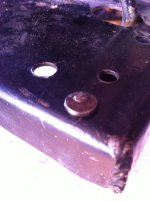greg_g, I do not know of " ANYBODY" besides yourself that has done this stack height adjustment on a Chinese tractor and made it work.
Given your consistent criticism of the topic, I wouldn't expect otherwise. Having said that, those who have been around here a while cannot help but note that you consistently attack the messenger - rather than address the procedure itself.
But for the newer members, it's been my experience that you cannot count on a replacement clutch pack to come out of the box ready to bolt onto the flywheel.
Do not assume that a replacement clutchpack is ready to install. Same applies to those who disassemble a clutchpack to replace a component, because putting it back together is more than just replacing the retaining hardware and sticking it back on the tractor. And this is the reason why the Chinese manuals contain the stack height spec. You need to tighten the bolts against the springs until the front to back (or top to bottom) measurement conforms to that number. Getting this measurement right is the basis for the desired end product, and that is proper clutch travel.
I have repeatedly stated that stack height adjustment can be done either horizontally
on a tractor that's already split, or vertically
off the tractor (bench adjustment).
On the tractor is more convenient,
on the bench is more accurate. It's the
vertical position
on the bench that gives origin to the phrase "
stack height". Given my advancing arthritis and degraded eyesight (not to mention that I like accuracy), I prefer the bench method. That said, there are a few extra pre-loading steps in the bench method (bolting to the flywheel pre-loads by default). But
both methods result in a clutchpack that has been adjusted to that particular factory spec. Unless/until it satisfies that spec, any adjustment that follows will simply be compensating for any inaccuracy in the stack height.
I have no argument with your statement "
most pre-mature failures were caused by the clutch never being adjusted right...." but
only to that point. Because they must be adjusted right both before
and after assembly. So to hopefully drive the point home, the
post adjustment specs are based upon the assumption of a correct stack height. Simply put, that's why the numbers are in the owners manual in the first place.
//greg//

